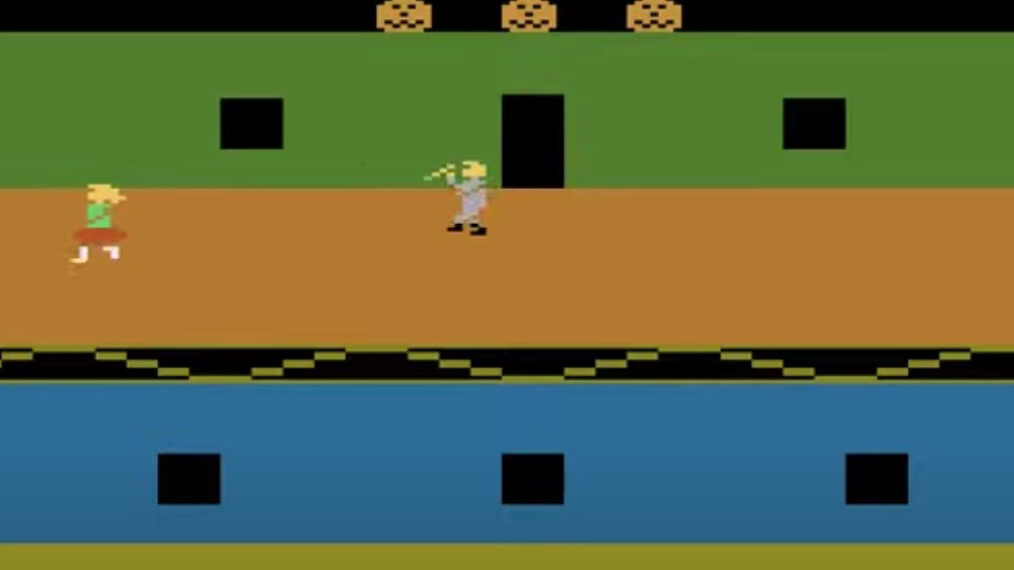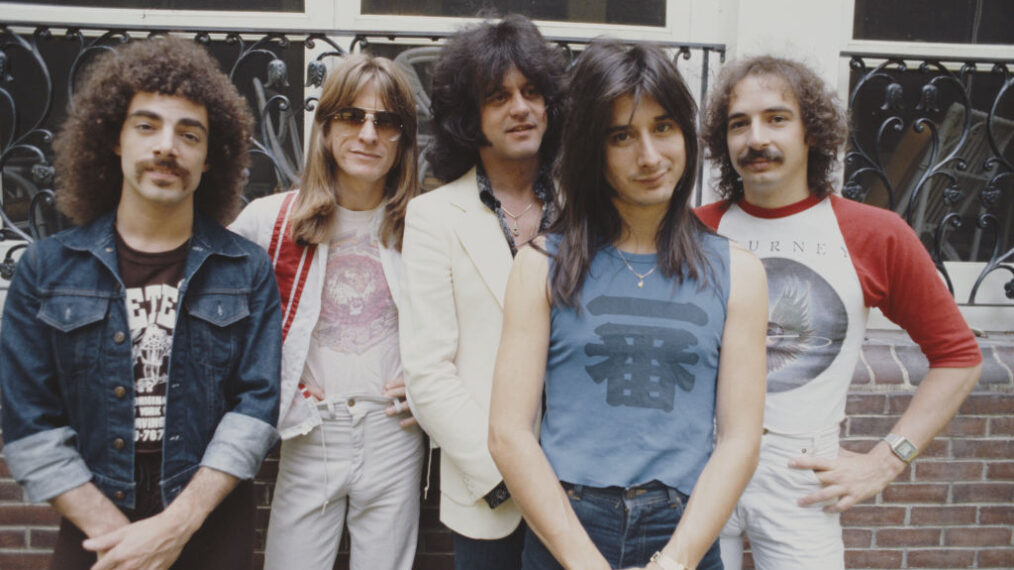I Won’t Stop Believin’ That Those Early ’80s Video Games Featuring Journey Were Pretty Dumb
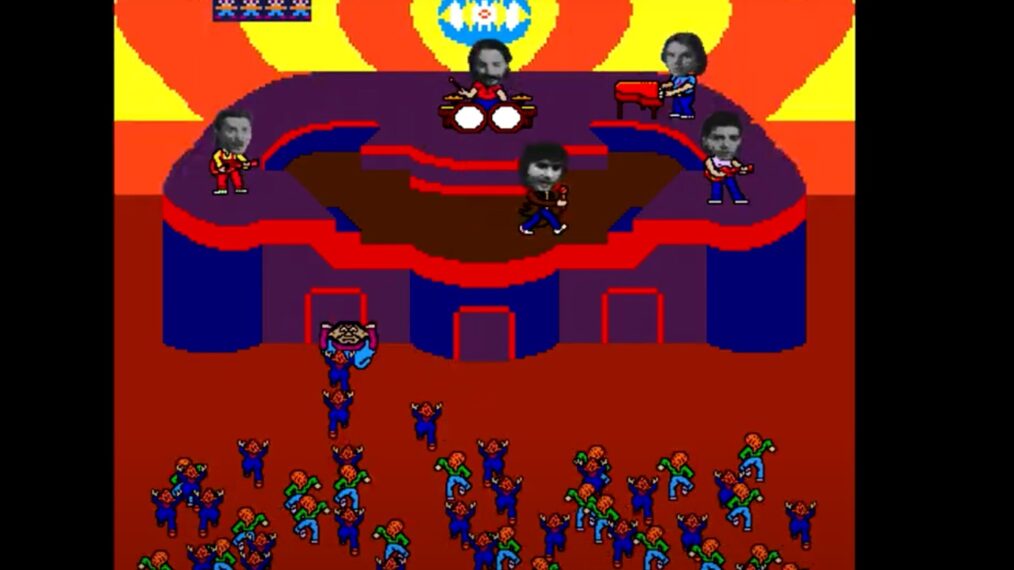
While classic rockers Journey may have seen their 1981 hit “Don’t Stop Believin’,” off their Escape album, recently become the “biggest song of all time,” it is doubtful that the two early ’80s video games featuring the band will ever find their ways into the upper ranks of classic video game titles.
As huge as Journey was back when these games were released, I don’t think even people who faithfully followed the group through their albums and concerts ever really welcomed these games with open arms.
But they are fun to look back on now as artifacts of that era that were somewhat groundbreaking in that I believe they were the first licensed video games featuring musical artists and some of their compositions.
JOURNEY ESCAPE (1982 Atari 2600 game by Data Age)
Although this was the first game out of the gate, this is the weakest of the two Journey video game titles. For one thing, it was created for the Atari 2600 home console versus the arcade, which already meant that it would be more limited in terms of graphics and gameplay.
Another indicator that this game would probably stink was seeing that it was developed by Data Age, one of the many third-party companies that flooded the market with Atari games. Activision and Imagic were among the leaders of these companies, but by most accounts, Data Age, was near the bottom.
My lone experience with a Data Age title back in those days was when my mom came home from grocery shopping one day and presented me with the Data Age cartridge Warplock, which I guess she had noticed in a bargain bin at the store. The box was lacking an instruction manual, and I really could not intuitively figure out how to play the game, but the little I saw and heard was quite disappointing.
So I’m somewhat surprised that Data Age was able to license the Journey name to create what they, perhaps accurately, billed as “the world’s first rock video game.” The game box even used the famous image from the cover of Journey’s Escape, with the Scarab vehicle exploding out of an orb.
In the game, you must help each member of the band escape through “mobs of love-crazed groupies and shifty-eyed promoters.” You must also find your roadies and manager, and make a run for the escape vehicle so you can “live to rock another day!”
You can hear more about Journey Escape in this commercial for the game, which even includes footage of the real Journey performing. Between all of the licensing expenses that must have gone into this commercial and what was ultimately a disappointing game, I’m not surprised that Data Age ended up being a short-lived company.
Some actual members of Journey’s lineup at the time also did their parts in trying to sell the game.
In a 1981 MTV news item seen in the clip below, Neil Schon and Jonathan Cain talk about how the game is based on their rock ‘n’ roll lifestyle and that “it’s our lifestyle in a little tiny game,” while Steve Smith, described as “a video game expert,” explains that he can keep playing the game over and over without getting bored. He may have been the only one.
Here’s a little bit of the Journey Escape gameplay that Smith found so compelling. Most of the music featured within the game is original music not based on Journey. Data Age must have blown its wad on getting an 8-bit version of “Don’t Stop Believin'” for the game’s intro screen.
If you’d like to give Journey Escape a try, you might be able to track down a used cartridge on eBay or someplace like that. There is also a gameplay emulator at this link on the Internet Archive.
JOURNEY (1983 arcade game by Bally Midway)
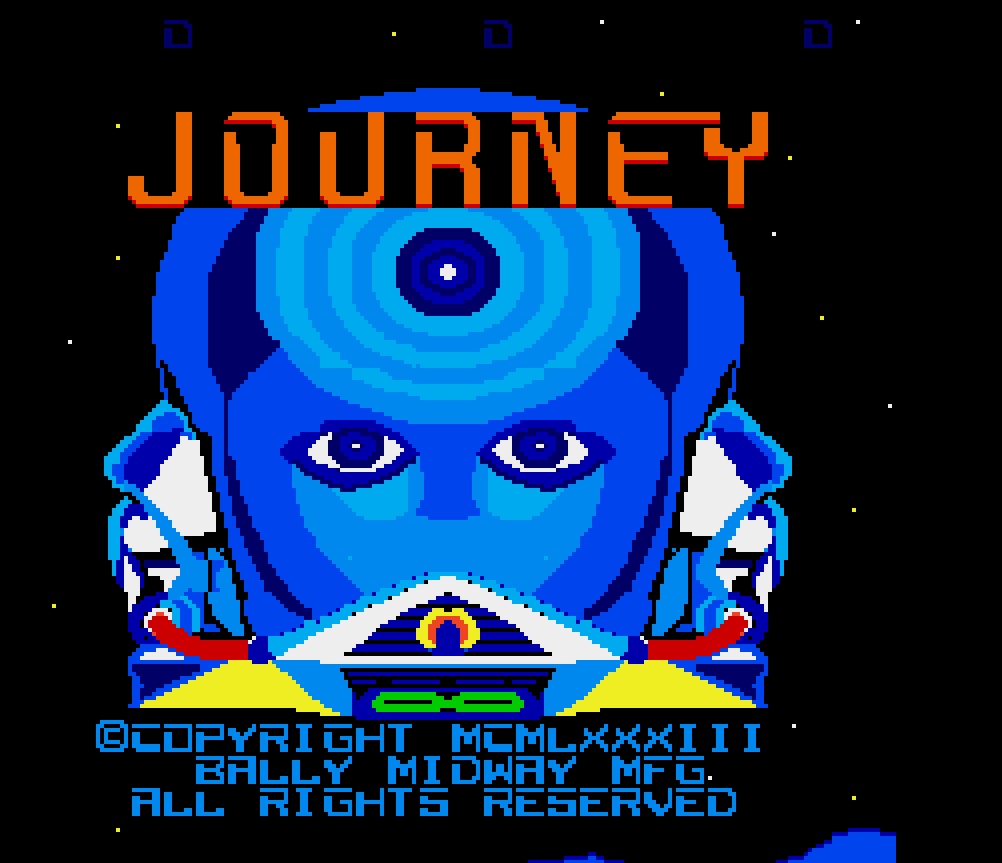
© 1983 Bally Midway Mfg. All Rights Reserved.
This game, which hit arcades in March 1983, while ultimately also kinda dumb, is certainly the best of the two Journey-themed video games, both in gameplay and especially in its technology.
Just above, you can see the intro screen for the game, which re-creates the logo from Journey’s 1983 album, Frontiers. Not the greatest graphic ever, but nicely done for its time.
In the below image from Bally’s promotional flyer for their game, you can see some of the other graphical elements it features, including the fact that it uses digitized black-and-white headshots of the band’s five members at the time — Steve Perry and Ross Valory, along with Schon, Cain and Smith — on top of the cartoony bodies of the characters a player controls.
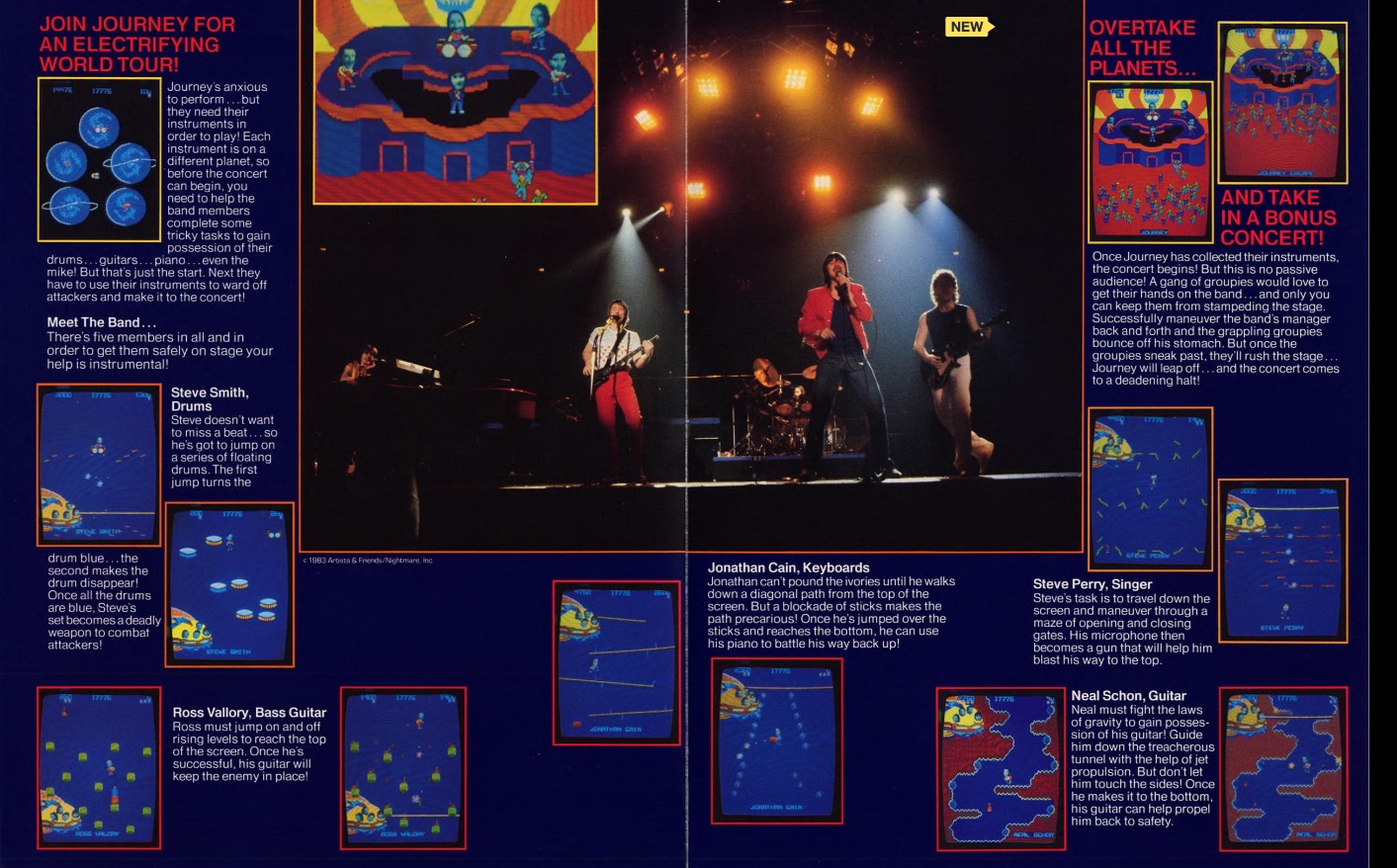
© 1983 Artists & Friends/Nightmare, Inc./Internet Archive
You can flip through Bally Midway’s full Journey arcade flyer here:
That flyer also explains the game’s premise, as do some of the game’s intro screens, which explain how “wild alien groupoids have seized Journey’s electro supercharged instruments.”
So, through five mini-games (each game representing one member of the band) taking place on five different planets, a player must guide a particular Journey-man through various obstacles to retrieve a certain object.
For example, singer Steve Perry must navigate a maze of swinging gates to obtain his microphone, which he can then use as a gun to destroy the gates.
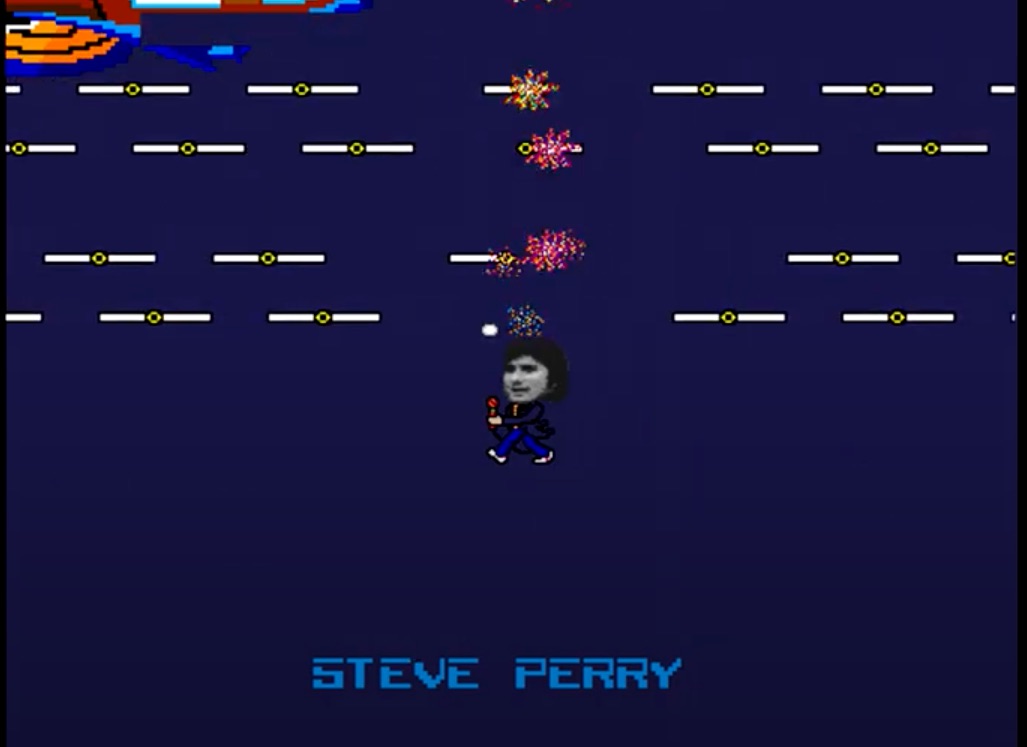
© 1983 Bally Midway Mfg. All rights reserved.
During each stage, a different synthesized version of a Journey song plays.
On the first planet, Perry’s mission is accompanied by “Don’t Stop Believin’.” In the other stages, Valory must find his bass while accompanied by “Keep on Runnin'”; Cain must get his keyboard as “Stone in Love” plays; Schon is after his guitar, with “Chain Reaction” in the background; and Smith fights for his drums, accompanied by “Wheel in the Sky” for his mission.
Additionally, an 8-bit version of “Lights” plays over the intro screens, and, hilariously, when a player loses a life, a little bit of “Who’s Crying Now” can be heard.
After successfully completing the five mini-games, the band members gather in the Scarab …
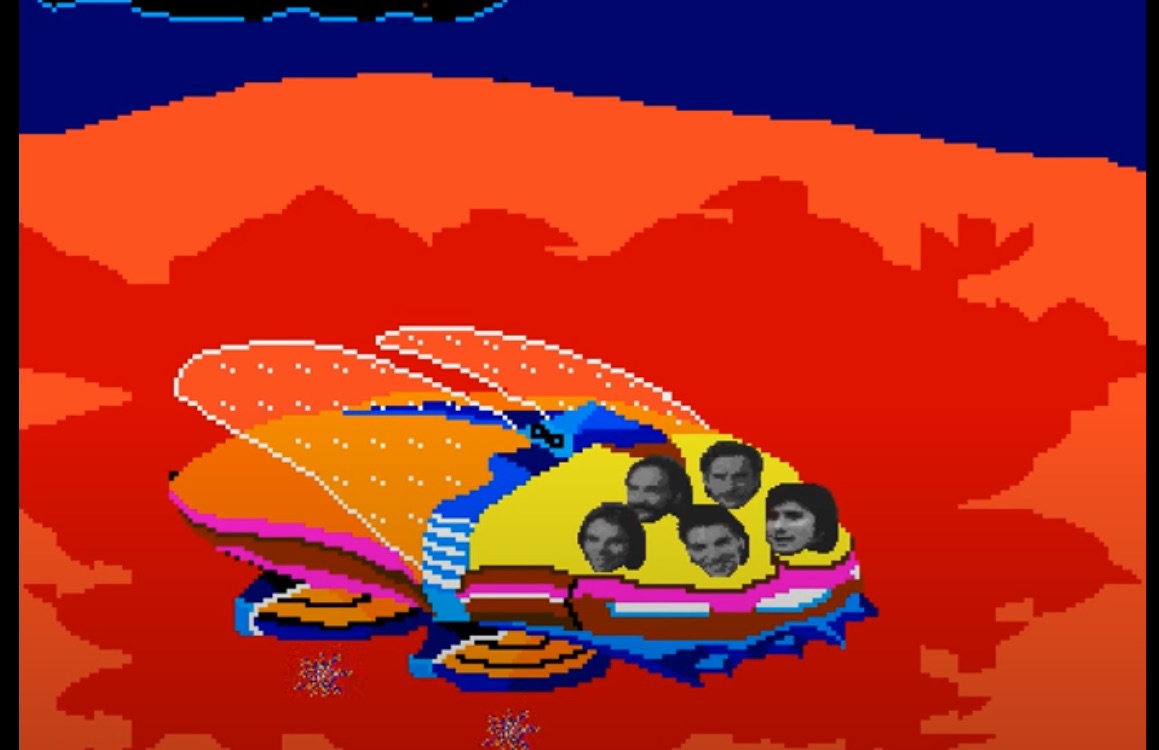
© 1983 Bally Midway Mfg. All rights reserved.
… and take off to go perform in what is described on one intro screen as “a spectacular concert at the Galactic Stadium.” Here, a player controls Herbie Herbert, a tour manager/roadie/bouncer who must keep crazed fans from rushing the stage. If any fan gets past Herbie, all of the band’s instruments are stolen once again, and the five mini-games restart at an increased difficulty level.
What’s really cool about this concert stage is that the game uses an actual looped recording of Journey’s “Separate Ways (Worlds Apart),” which is played via the machine’s internal cassette deck.
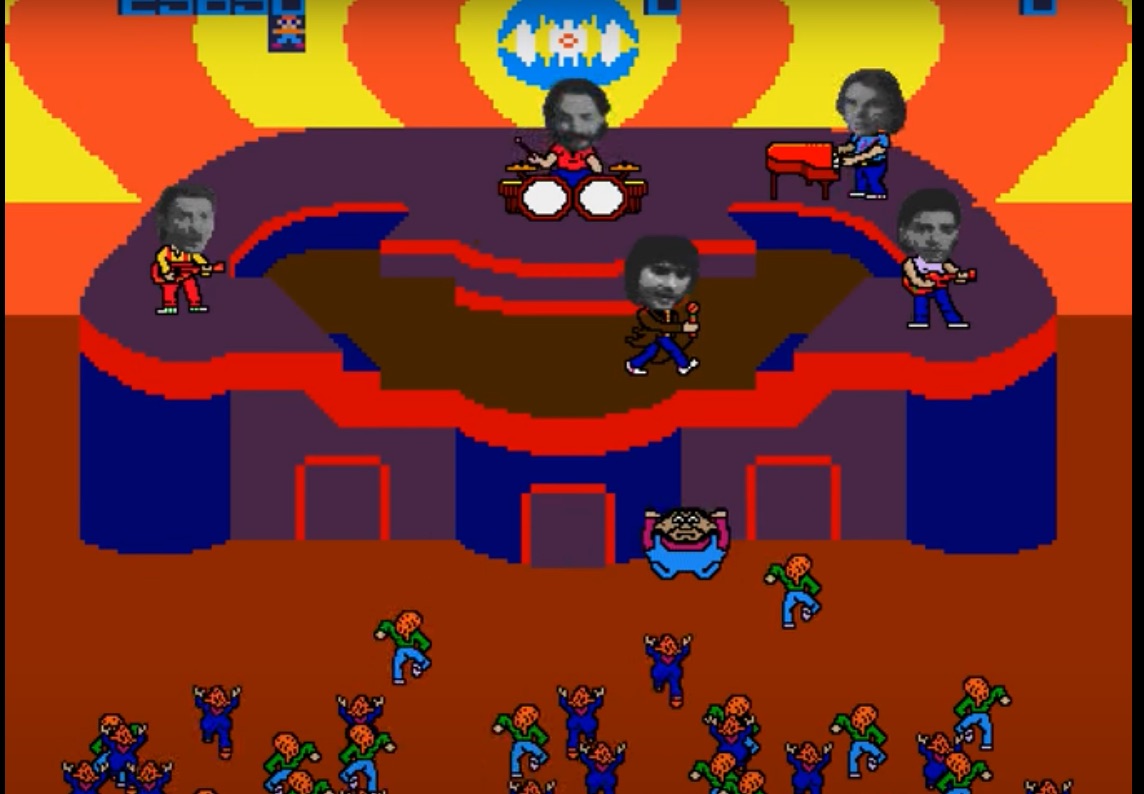
© 1983 Bally Midway Mfg. All Rights Reserved.
Here are some examples of Journey gameplay, as well as samples of the synthesized and recorded music featured in the game.
According to Classic Arcade Gaming, the record score on Bally’s Journey game is 12,181,850, achieved in December 1983 by Chuck Cross at an Aladdin’s Castle in Steubenville, Ohio.
I guess no one was interested enough in playing the game during the 40-plus years since to try to beat that.

